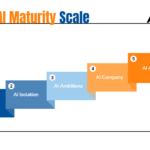
Madness. It’s back. The NCAA Tournament may look a little different this year, but the 68-team, single-elimination event will soon be capturing the attention of the nation – and making brackets a thing again. Here are some tips and considerations from our data analytics team for succeeding in your office pool, along with insights you can apply to your business.
Get the End Right
It may sound obvious before the tournament, but the end matters far more than the beginning, as more points are awarded for wins in later rounds. The leader after Day 1 rarely wins it all. The teams most likely to make it deep into the tournament are those with the fewest exploitable weaknesses. Focus on keeping those around in your bracket. 2021 Tip: Gonzaga, Michigan, Baylor, Houston, and Illinois are the current teams in the Top 25 in both offensive and defensive efficiency.
Survive
Forcing upsets early can eliminate good teams from your bracket. Only take chances with matchups you think will be close. Also, head-to-head matchups and styles of play only really matter in the first week of the tournament. From the Sweet 16 on, the chances you’ll have every match up correct are so small that it’s not worth emphasizing specific matchups.
Anatomy of an Upset
Whereas the most likely teams to win the championship are those with the fewest exploitable weaknesses, upsets are most likely to occur early in the tournament by teams that can exploit weaknesses with elite traits (such as forcing turnovers, shooting threes well and at a high volume, offensively rebounding at a high rate or having one dominant player who can take over a game). They also tend to come from teams that play a unique brand of basketball – especially if that includes slowing the game down to minimize possible margin. 2021 Tip: Teams currently outside the Top 25 who fit this profile include Liberty, Colorado State, Abilene Christian, Western Kentucky, and Winthrop.
Best vs. Most Deserving
While this season presents new challenges in determining who is most deserving of being in the tournament and at what seed, that’s not your job. Your job is identifying who is best; who should win. When filling out a bracket, you can ignore seeds. Each committee is different, and committees are built to reward resumes, not talent.
Size of the Pool
Let’s talk game theory. The larger the pool, the more important it is to differentiate your answers from the norm and take chances. For small office pools, it’s best to go with exactly what you think the most likely outcome is going to be. In larger pools, it can be beneficial to look at some of the 60/40 games and work in upsets. 2021 Tip: Final Four sleepers – Teams currently projected outside of the top two seeds in consensus brackets who have a good chance to advance to the Final Four include Houston, Florida State, Purdue, and Colorado.
How does this correlate to business?
In AMEND’s experience across a variety of industries and hundreds of businesses performing operations excellence, technology, business intelligence, and data science work, many of the same concepts apply. These include:
- Focus on what matters – In basketball, a possession can only end one of three ways – a shot, a turnover, or a foul. A possession can be extended with an offensive rebound. Predicting outcomes in basketball only needs to consider how successful (or not) teams will be at these four things: shooting, turnovers, fouling, and rebounding. Everything else is just a step in addressing these four items. In business, there are often just four to five critical focal points to consider when truly evaluating the health of the company or a department. Focus on identifying and fully understanding those.
- Consider the objective – What’s the problem at hand? The general public places too much emphasis on tournament seeding. The committee’s objective of choosing and seeding 68 teams is very different than trying to determine who will win games between those teams. Too often, businesses do not fully understand the objective or the problem they are trying to solve. Einstein once said (paraphrasing) that if he had an hour to solve a problem to save the world, he would spend 55 minutes thinking about the problem and five minutes solving it. Fully understanding the problem makes it much easier to solve.
- Outcomes that have not occurred in the past can be predicted in the future – it’s true. It is unlikely that two teams in the tournament already played each other, especially with the exact same set of healthy players – yet we can still come up with a prediction for each game by knowing the strengths and weaknesses of each team. Predicting possible future events in business needs to allow for the possibility that future states fall outside of previously seen ranges or expectations.
- Process over results – Over time, having as much context and doing things the objectively sound way will win out. Overly reacting to actual outcomes, while human nature, is dangerous. Brackets that a member of our team published have finished in the 90th+ percentile in 13 of 15 years and 99th+ six times. That’s really good. Changing an approach due to the outcomes of the two years that didn’t fall in 90th or better would have been a mistake. It’s certainly understandable to evaluate processes and learn from the past, but one result should not guide decision-making.
Our team develops solutions to fit your performance-driving KPIs and support your short and long-term strategy planning. Fill out the form below if you’re interested in partnering with AMEND to dig deep into your data to unlock value in your organization.









